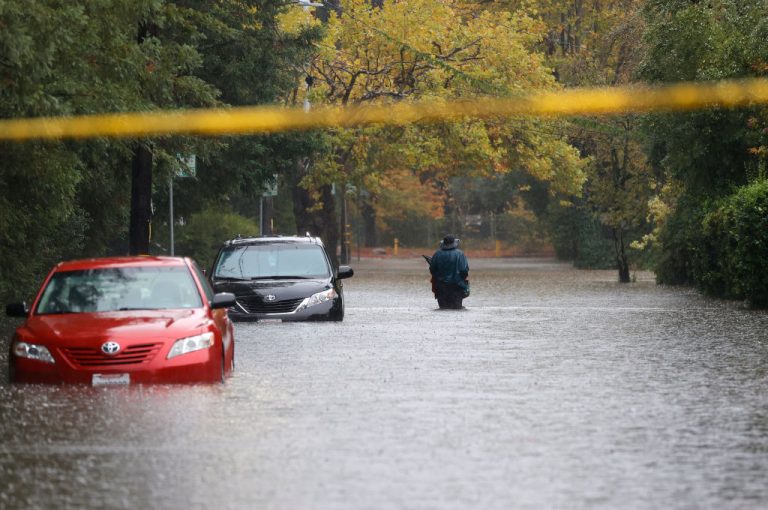A level five atmospheric river (AR) moved into the southern California region over the weekend bringing record-setting rain, causing flash flooding, mudslides and prompting evacuations.
The drought stricken city of Sacramento ended a record 212 day dry streak when 5.44 inches of rain fell over 24 hours, a level of rain typically seen in two and a half months.
Downtown San Francisco recorded just over 4-inches of rain on Sunday, marking the wettest October day on record and the fourth wettest day of any month since records began in 1849.
On Sunday, the San Francisco International Airport recorded just over four inches of rain, raising the monthly total to 5.5 inches, an amount roughly 10 times the average for the month.
Reno, Nevada broke its October record as well with 2.82 inches of rain between Sunday and Monday.
Success
You are now signed up for our newsletter
Success
Check your email to complete sign up
An AR is a narrow corridor of concentrated moisture in the atmosphere typically a few hundred miles wide and several thousand miles long. At any given time there are three to five of these narrow plumes present within the atmosphere.
The amount of water these rivers carry is gargantuan. A single atmospheric river can carry as much water as the world’s largest river, the Amazon River.
Flash flood and debris flow warnings prompt evacuations
The deluge of rainfall, which brought upwards of an inch of rain per hour in many areas, caused flash flooding and debris flows in the Dixie, Caldor, River and Creek fire burn scar areas.
State Route 70, near Tobin, Calif., was closed after a landslide blocked traffic. The area is within the burn scar of the Dixie Fire, which earlier in the year burned nearly a million acres.
The Santa Rosa Fire Department tweeted video footage of raging rivers as water inundated streets and threatened homes and places of business.
The Santa Barbara County Sheriff’s Office ordered evacuations on Sunday “for residents near the Alisal fire burn scar including areas west of Las Flores Canyon, east Mariposa Reina, south of West Camino Cielo and down to the ocean,” the Los Angeles Times reported.
In some areas, rain turned to snow creating hazardous conditions that prompted the California Department of Transportation to close multiple major roads and passes across the state.
The National Weather Service in Sacramento told residents via twitter that for those in the Dixie fire burn area if they had not already evacuated it may be too late to do so.
Official warnings informed residents that warning signs of a debris flow include “rushing water and mud,” and unusual sounds including “cracking, breaking roaring, or a freight train,” and told residents to “not attempt to cross a debris flow [and to] take shelter in the highest floor of your home.”
Historic rain not enough to resolve historic drought
Prior to the storm more than 86 percent of California was considered in “extreme” or “exceptional” drought according to the U.S. Drought Monitor. While the storm is being welcomed by many it is not expected to alleviate the drought conditions in the area.
The storm’s warm nature means less snow fell and “snow is more useful from a water resources standpoint since it can easily be stored in the Sierra Nevada as it melts more gradually. That creates a more reliable reservoir of water,” The Washington Post reported.
Currently, 100 percent of California is still considered to be in “Moderate Drought” conditions, 87.2 percent is considered in “Extreme Drought” conditions and 45.7 percent is considered to be in “Exceptional Drought” conditions, according to www.drought.gov.
The U.S. government expects drought to continue or worsen throughout the winter due to an emerging La Nina phenomenon.
















